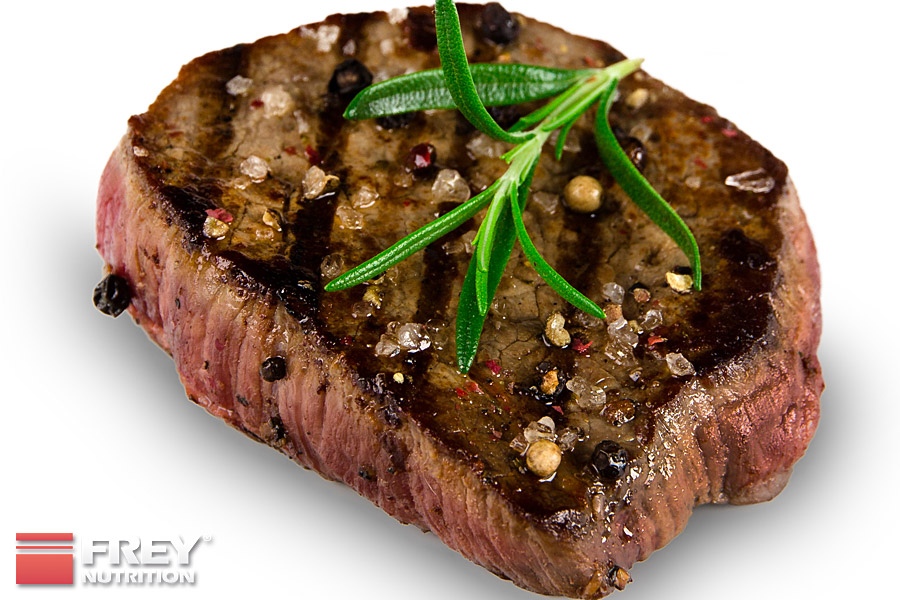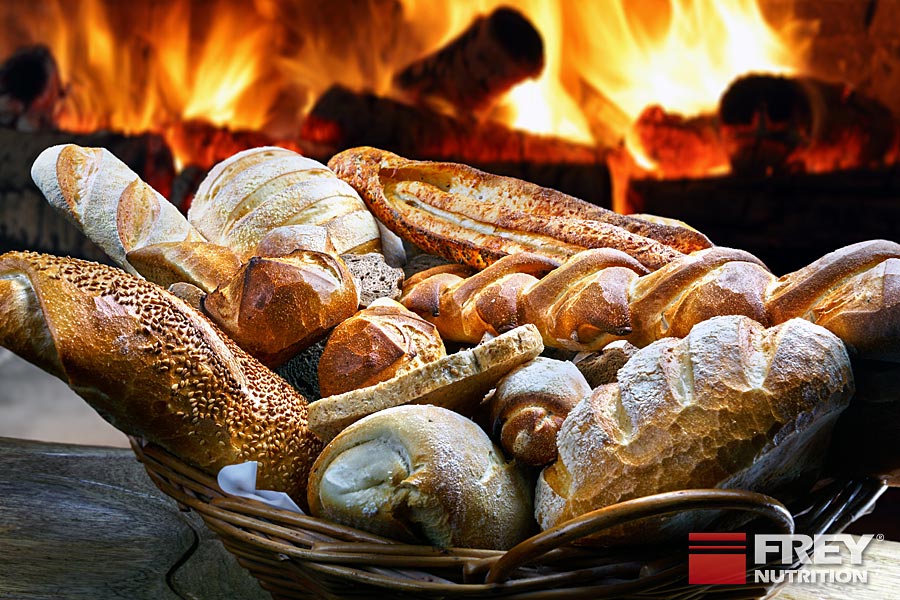SIMPLE, EFFECTIVE AND EFFICIENT
The commuter diet is suitable for recreational, hobby and fitness athletes, as well as for advanced athletes and those who compete professionally. Non-athletes can also benefit from it, as long as the basics are followed.
I created the pendulum diet over 20 years ago and have continually improved and optimized it during my many years of competition. It is a diet based on nutritional principles and, in addition to the quantity, quality and distribution of nutrients, it takes into account biological metabolism, its basic principles and insulin theory.
The targeted control of food in terms of quantity, type and time makes the pendulum diet a very successful form of nutrition in practice. Compared to most other diets, it can be easily maintained over the long term and supports health and performance in the long term.
SUITABLE FOR DIET AND BUILDING PHASES
As the name suggests, the diet in the pendulum diet follows the movement of a pendulum, always moving and never at rest. By deliberately increasing and reducing nutrients, you eat differently every day of the week.
THE PENDULUM DIET IS EQUALLY EFFECTIVE AND EFFICIENT BOTH IN DIET AND BUILDING PHASES
This activates the metabolism and increases its speed. Carbohydrates are the main source of energy, depending on whether it is a training day or a non-training day.
The protein recommendation in the pendulum diet is an average of 2.2 to 2.5 g per kilogram of body weight per day, but also depends on individual goals. While beginners can get by with a moderate amount of protein, the daily protein requirement of professional athletes with competition experience often reaches 400 to 500 g per day. The high proportion of active muscle mass and the regular intensive training and endurance units make this amount of protein necessary and necessary, above all in order to be able to continue to build muscle mass.
The pendulum diet is not only an optimal form of nutrition for weight loss diets, but is also equally effective during building phases. It is therefore used by numerous athletes for mass phases, diet phases and in competition preparation.
THE BASICS OF THE COMMUTER DIET
The basics of the pendulum diet are explained in detail below and are structured as follows:
BASICS OF THE COMMUTER DIET
1. THE DEACTIVATION OF THE SURVIVAL INSTINCT
2. TARGETED METABOLISM ACTIVATION
3. THE OPTIMAL MEAL DISTRIBUTION
1. THE SURVIVAL INSTINCT
The first basis of the pendulum diet is based on the biological fact that the human metabolism adapts to the food intake after 3 days of constant nutrition. Accordingly, a restricted calorie intake leads to a reduction in metabolism. However, by increasing nutrient intake, this is reversed, which causes the metabolism to increase again.
If a constant reduction diet is followed over 3 days, the metabolism reacts on the 4th day, adapts to the reduced food intake and slows down. By using less energy, the organism acts as a safeguard for our survival, primarily to conserve reserves. This survival instinct of metabolic adaptation goes back to the hunter-gatherer era of our ancestors, when both food procurement and survival had to be ensured every day. Our metabolism has not yet realized that we live in a society of abundance today, in which food does not have to be hunted and survival does not have to be ensured. Such an adaptation is biologically possible without any problems, but we will not live to see it, as the body's adaptation processes progress only slowly and take several centuries.
With 9.3 calories per gram, fat provides more than twice as much energy as proteins and carbohydrates and is therefore particularly valuable for our organism. By reducing our metabolism and protecting and saving fat deposits in our body, our survival is ensured in times of need.
Since we don't have to "hunt or gather" our food these days and we don't suffer from hunger, but rather have to contend with an oversupply of food, protection in the form of fat conservation is neither a contemporary nor sensible function. In order to achieve our goals, be it reducing body fat, building muscle mass or taking part in a competition, we need to take measures that cannot eliminate the body's own protection, but at least limit it. These measures are implemented through the pendulum diet.
THE CALORIES AND NUTRIENTS BREAKDOWN
In order to explain the pendulum diet in a clear and practical way, an athlete is needed as an example. Sports fanatic Max volunteers, especially since his goal is to reduce body fat and he would like to achieve this with the pendulum diet. Max is an ambitious fitness athlete with a body weight of 80 kg, an average metabolism and a moderate fat and slightly increased muscle mass percentage.
With his sedentary job and 4 60-minute workouts per week, Max needs to consume around 3,000 calories per day to maintain a balanced calorie balance. With this, he neither gains nor loses weight. Since Max wants to lose body fat and has understood the basics of energy balance, he correctly restricts his calorie intake by 500 calories per day.
With 2500 calories per day, Max takes in less energy than he uses at the same time, thus creating a negative calorie balance. If, however, his goal was to build muscle mass, he would have to increase the amount of calories by 500 to a total of 3500 per day in order to create a positive calorie balance and thus the basis for building new muscle mass. However, since Max wants to define himself, he sticks to the total amount of calories required for fat loss of 17500 per week (= 7 x 2500 kcal).
These are divided into the days of the week as follows:
MONDAY / TRAINING ("FOOD DAY") = 4000 KCAL
TUESDAY / TRAINING = 3000 KCAL
WEDNESDAY / NO TRAINING = 1500 KCAL
THURSDAY / TRAINING = 3000 KCAL
FRIDAY / TRAINING = 3000 KCAL
SATURDAY / NO TRAINING = 1500 KCAL
SUNDAY / NO TRAINING = 1500 KCAL
If you like things quick and easy and are not averse to simple mathematical calculations, you can use the following percentage values to calculate the calories for each day of the week:
PERCENTAGE DISTRIBUTION OF CALORIES:
LOADING DAY = 133%
TRAINING DAY = 120%
TRAINING FREE DAY = 60%
By varying the carbohydrate intake, Max varies the daily calorie amount and thus successfully implements the first basis of the pendulum diet, namely the pendulum of calories, in reality. The nutrient distribution according to the pendulum diet is as follows:
TRAINING DAY
- Protein 40%
- Carbohydrates 45%
- Fat 15%
TRAINING FREE DAY
- Protein 60%
- Carbohydrates 20%
- Fat 20%
LOADING DAY
- Protein 30%
- Carbohydrates 60%
- Fat 10%
2. TARGETED METABOLISM ACTIVATION
Targeted metabolic activation is the second principle of the pendulum diet and plays a key role in its success. The activation of the metabolism is ensured by a so-called "loading day", which I also called a "feeding day". On one day of the week, Max consciously increases the carbohydrate intake of his food by eating more complex carbohydrates in the form of rice, pasta and potatoes.
THE SO-CALLED "FOOD DAY" INCREASES THE METABOLISM RATE AND PREVENTS EATING CRABS
The drastic increase in carbohydrates causes the metabolism to stop saving fat reserves and increase its speed because there is now enough energy coming from outside. Fats are no longer stored for times of need but are burned as energy.
Max's basal metabolic rate increases and he burns more calories than he did before the loading day, not only when he is moving but also when he is resting. The increased calorie intake satisfies Max, which effectively prevents cravings. Max even looks forward to reducing his calories again and continuing the diet, which is not uncommon given the loading day. Since the varying calorie intake of the pendulum diet does not create monotony, which often leads to people giving up on other diets, it is feasible in the long term. On the loading day, the increased amount of carbohydrates should consist primarily of complex carbohydrates. Simple sugars, fatty and/or sugary foods should be avoided, as these open the door to unwanted fat storage and would destroy the progress of the diet. The loading day can be carried out on any day of the week; it does not have to be on a training day.
Often, days when there is enough time, such as Sundays, are particularly suitable for managing the increased calorie intake. The three days without training are considered low-carb days, on which carbohydrate intake is greatly reduced.
To further increase fat loss, Max decides to do intensive cardio training, which he does for 45 minutes each on his non-training days.
EXCURSUS: THE PERMANENT INCREASE IN METABOLISM
Cardio training for fat loss is not about burning fat during the session, but rather about increasing your metabolism afterwards. To achieve this increase in metabolism, you should maintain a pulse rate of around 150 to 160 beats per minute throughout the entire endurance workout.
This activates the metabolism and burns fat not only during cardio sessions, but also at home on the couch, while watching TV and at night while sleeping. If done correctly, you can effectively increase your metabolism 24 hours a day, 7 days a week and 30 days a month in order to lose weight consistently and in the long term.
The choice of equipment for cardio training is unimportant, what is important is maintaining the pulse range mentioned above to activate the metabolism. Further information and background on increasing metabolism can be found in the article AEROBIC TRAINING AND FAT LOSS available.
3. MEAL DISTRIBUTION AND INSULIN RELEASE
The third principle of the pendulum diet is to consider the insulin theory and its background (see: THE INSULIN THEORY ). In the pendulum diet, daily calories are divided into 5 meals and 1 to 2 side meals, in the form of pre- and post-workout nutrition. Quickly available carbohydrates are consumed precisely when the metabolism can use them optimally. This is the case in the morning, immediately after getting up, and immediately after training. Due to the 8 to 9 hours without food intake, a catabolic state prevails in the morning with increased cortisol levels (= strong degrading hormone).
This can be compensated by consuming readily available carbohydrates and the resulting insulin release, because the hormone insulin blocks cortisol production and lowers its level. The same situation prevails directly after training, as intensive training uses up carbohydrate reserves and increases cortisol levels. Therefore, immediately after the workout, it is primarily quickly available carbohydrates in the form of MALTO 95 in combination with fast proteins, especially TRIPLE WHEY , makes sense.
Another advantage of the metabolic state after training is the fact that the trained muscles have a significantly increased need for nutrients and insulin transports these directly to the muscle cells, where they are used for repair work and the building of new muscle mass. Therefore, the intake of additional substances, such as ANABOLIC BCAA + , CREATINE X6 and PURE GLUTAMINE can be useful as it is optimally introduced into the muscle cells.
While insulin release in the morning and after training is sensible, there are times when it should definitely be avoided. But first, a brief explanation of the background of our body's hormonal control mechanisms. Three hormones are relevant to our goals:
- TESTOSTERONE
- INSULIN
- GROWTH HORMONE
We can have a decisive influence on the latter two in particular through targeted nutrient intake, with insulin and growth hormone acting as antagonists. If insulin levels are high, no growth hormones are released and vice versa. Growth hormones are released in greater quantities during dieting, during intense physical exertion, in stressful situations and in small amounts throughout the day, especially when blood sugar levels are low.
Larger amounts of growth hormones are produced, especially during intensive training sessions and during nighttime sleep (approx. 90 minutes after falling asleep). For this reason, the intake of short-chain carbohydrates, which increase insulin levels, should be avoided at these times. In the pendulum diet, carbohydrate-containing foods are avoided before training and before going to bed and only protein-rich foods are consumed.
The targeted carbohydrate intake or reduction of the pendulum diet thus achieves optimal hormone levels: on the one hand, maximum insulin secretion in the morning and after training, and on the other hand, increased growth hormone levels during training and before going to bed. The alternating hormone secretion helps to protect muscle mass and at the same time paves the way for increased breakdown of body fat.
THE COMMUTER DIET IN THE BUILDING PHASE
In the build-up phase, the pendulum diet is identical, but with a calorie surplus and thus a positive calorie balance. The three days without training serve to reduce metabolism, because just like with a calorie restriction, the metabolism also adapts to an increased calorie intake. This means that the metabolism increases and we sometimes burn more than we consume, which can lead to a standstill in a build-up phase.
DUE TO ITS BALANCED PROPERTIES, THE PENDULUM DIET CAN BE SUPPORTED PERMANENTLY, FOR A LIFETIME, AND IS SUITABLE FOR BOTH DIET AND MASS PHASES.
The reduction in calories and carbohydrates on days when you don't train counteracts this mechanism, preventing your metabolism from becoming too fast and thus problems with building muscle. Furthermore, the reduction in carbohydrates on days when you don't train counteracts unwanted fat storage. Last but not least, the pendulum diet also prevents monotony during the building phases, as the amount of calories per day is also varied, thus providing variety.
THE DURATION OF THE COMMUTER DIET
The pendulum diet can be used for 4 weeks, 10 weeks, an entire competition preparation and/or for life. Because it is very balanced and varied and thus prevents monotony, it is also easily suitable as a long-term form of nutrition. Its balance, without having to forego certain foods or nutrients, makes the pendulum diet the ideal form of diet for both long-term maintenance of the desired figure and for promoting health and performance!

ADVANTAGES:
- Suitable for building muscle mass- Suitable for fat reduction
- Consideration of the biological basis of metabolism
- Balanced and varied, without giving up certain foods
- Long-term metabolism-boosting effect
- Avoiding food cravings
- Consideration of hormonal control circuits
- Targeted timing of insulin secretion
- Control of growth hormone production
- Permanently feasible
DISADVANTAGES:
- Recommended for beginners only with restrictions- Prerequisite of knowledge about the energy balance
- Calories must be counted
- More time-consuming than other diets

The pendulum diet is a diet that is easy to implement in practice and has decisive advantages. It takes into account the biological processes of our metabolism and promotes the natural hormonal control circuits in the interests of our goals. Its metabolism-boosting principles make it superior to many other types of diet in terms of effect and results.
Since the energy balance and the calorie calculation are prerequisites of the pendulum diet, the user should have a basic knowledge of food and its nutrients. This fact makes the pendulum diet only recommended to a limited extent for beginners and is aimed more at advanced users or those who are familiar with the calculation of daily calories and dealing with the energy balance (see: Don’t be afraid of the energy balance !
















